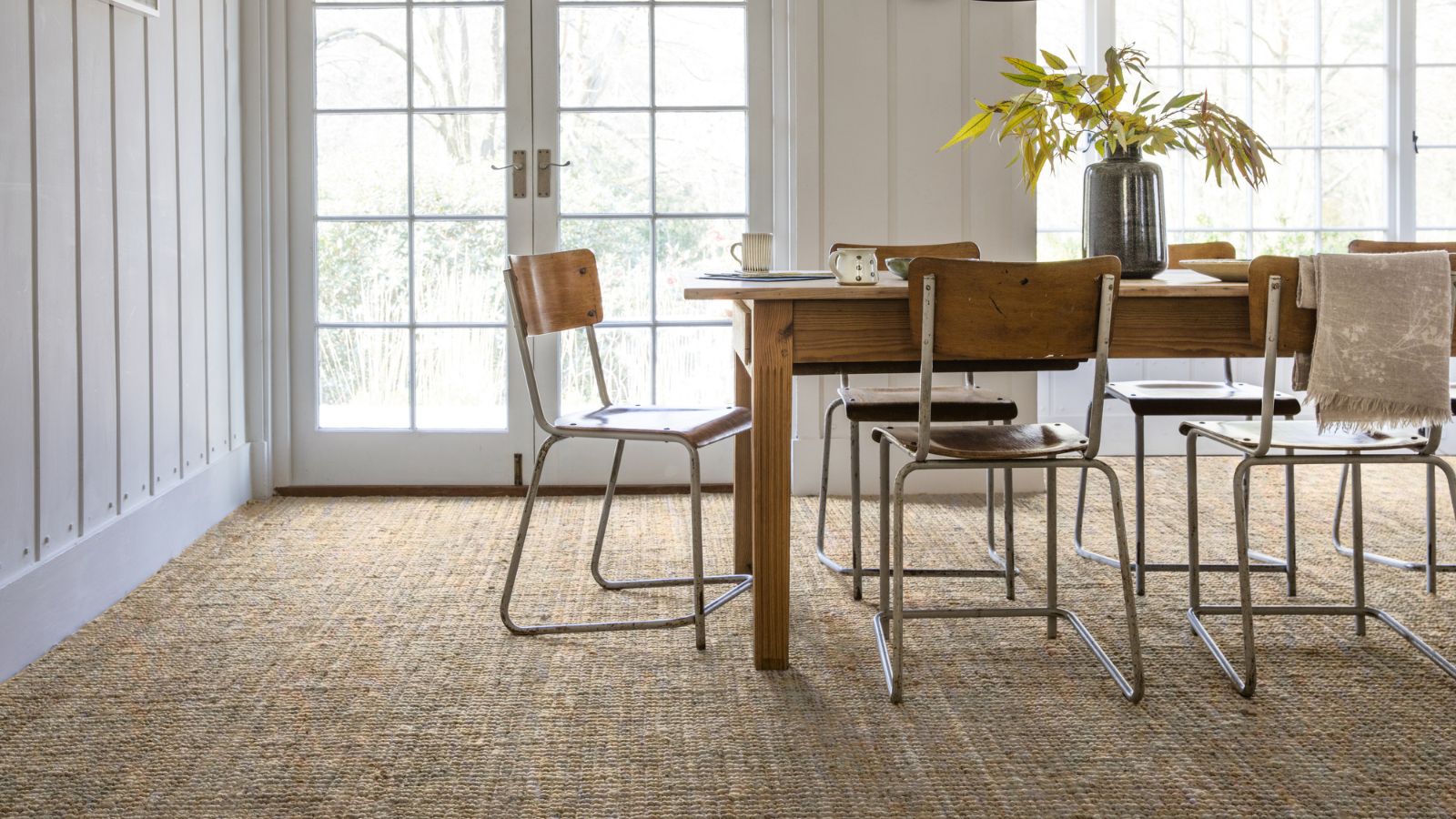Extension or conservatory? Make sure you take size, style, speed and spend into account to avoid making a costly mistake
With the design and cost lines between extensions and conservatories more blurred than ever before, what's the best way to decide between them when you're adding space to your home?
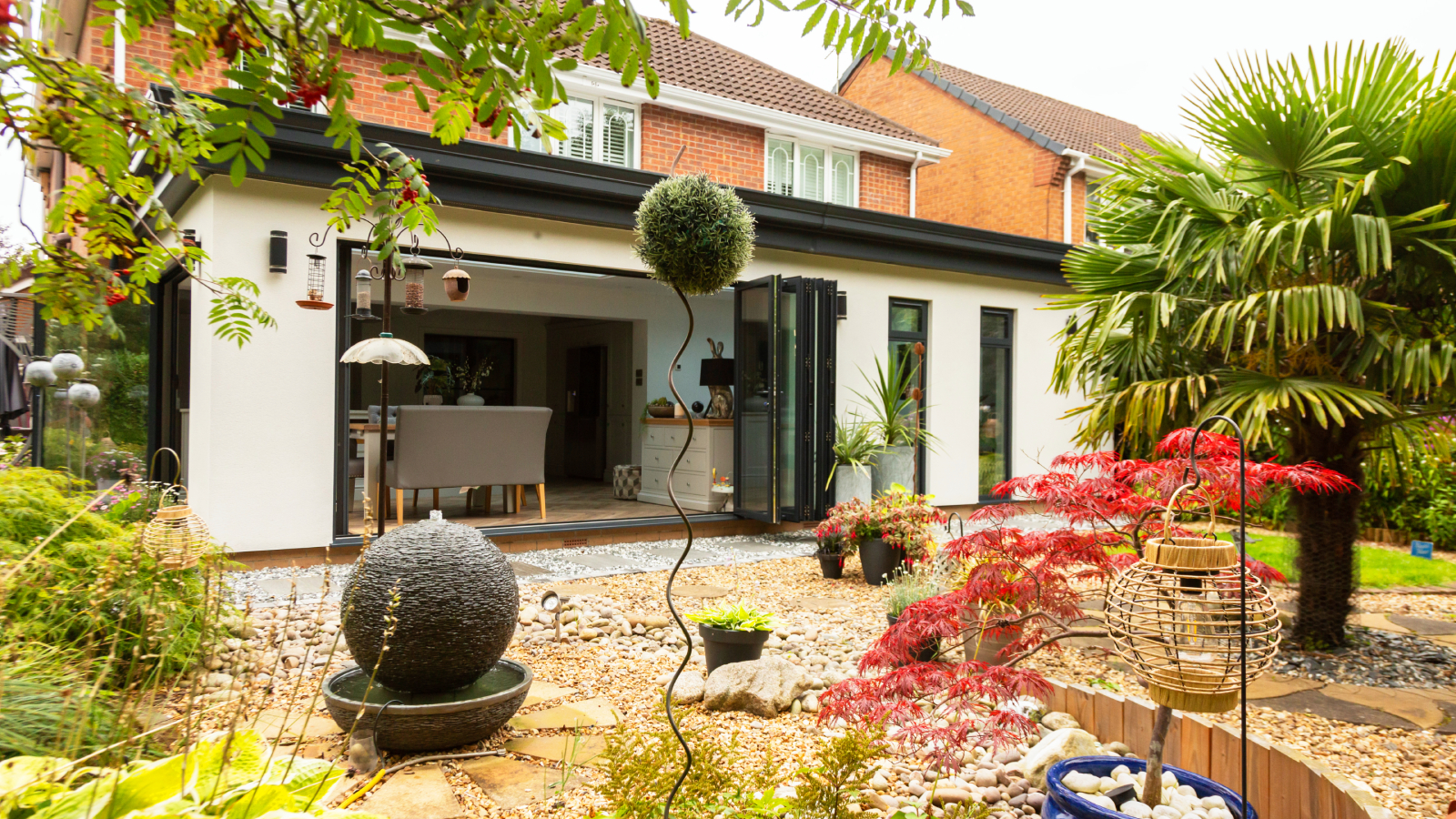
With conservatories long shaking off their questionable reputation, it's fair to say choosing between an extension or conservatory is not as easy a decision as it once was.
Nowadays, with the design differences between the two less visible, while your budget for building an extension may still come in higher, how you use the space, what it looks like and how much room you need can often be fulfilled by both types of building.
So, how do you choose between an extension or conservatory and are there ways of incorporating the best of both to expand your home?
The main differences between extension or conservatory
Before you start to look at the advantages and disadvantages of each method of adding to your living space, it is useful to first ask 'when does a conservatory become an extension?'
Although both conservatories and extensions are structures that add extra space to a property, there are some key differences which may make one more suitable than the other, depending on what you, as the homeowner, are hoping to achieve.
It's also important to understand where the differences lie in order to ensure you fall in line with the planning rules and regulations surrounding the two different types of extensions.
Conservatories historically, and still today, by definition have two defining features: glass walls (usually supported on dwarf walls); and a glazed (or sometimes polycarbonate) roof.
Bring your dream home to life with expert advice, how to guides and design inspiration. Sign up for our newsletter and get two free tickets to a Homebuilding & Renovating Show near you.
Many different types of conservatories are often bought from specialists, as opposed to being designed by an architect or house designer. They also tend to be selected from a range of designs and are frequently factory built.
Providing a conservatory is under 30m², it also won't need Building Regulations approval either and planning permission is often not required.
Of course house extensions can also feature walls of glass and glazed ceilings, but they tend to be built with greater structural integrity and feature solid, insulated walls and roofs, the exception being prefab extensions which are designed to be lighter and built using quicker construction methods.
A house extension is also most commonly designed to be part of the existing house, with no barrier, as opposed to a conservatory which is often seen as an add-on for a specific purpose, such as a sunroom.
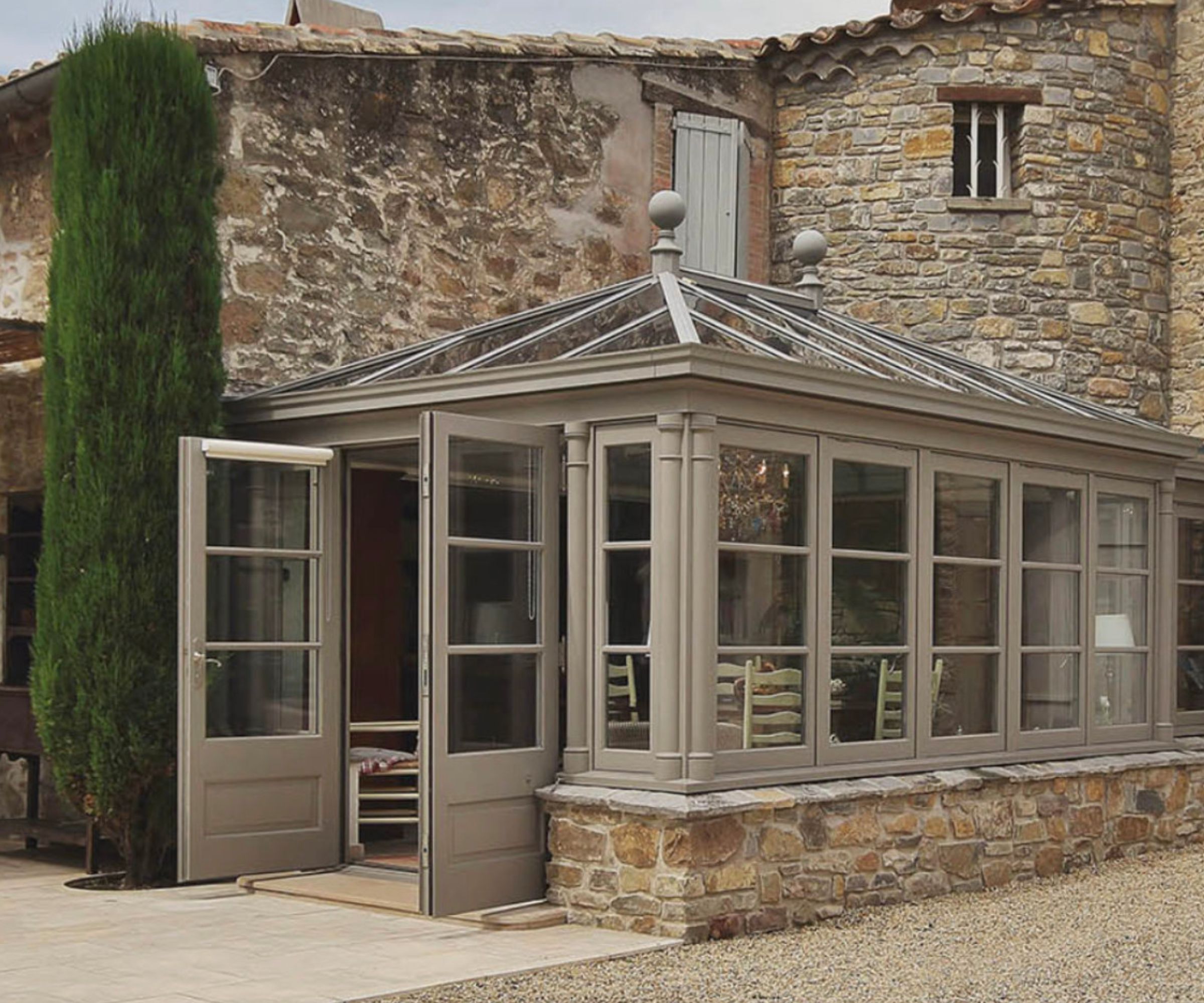
Extension or conservatory — the five factors affecting choice
When weighing up extension or conservatory, there are 5 main questions to ask yourself before making your final decision:
- What will the space be used for?
- Where will the new space be built?
- What is your budget?
- How much disruption are you willing to live with?
- What timescales are you working to?
Start your jouney by sitting down and planning exactly you want from the new space and where on your home you are hoping to add more room.
It might be that as soon as you begin your list, it becomes clear that one option will be better than the other – for example, if you want a new bedroom in your extension, a fully-glazed conservatory will be impractical. Or, if you need more than one floor added to your home, a double storey extension will be your only real option.
Likewise, kitchen conservatories need careful planning if they are to work well. They can be beautiful additions but large expanses of glazed walls can make storage tricky in kitchen conservatory extensions, and you may find yourself leaning towards a more solid construction with more scope for multi-functional use.
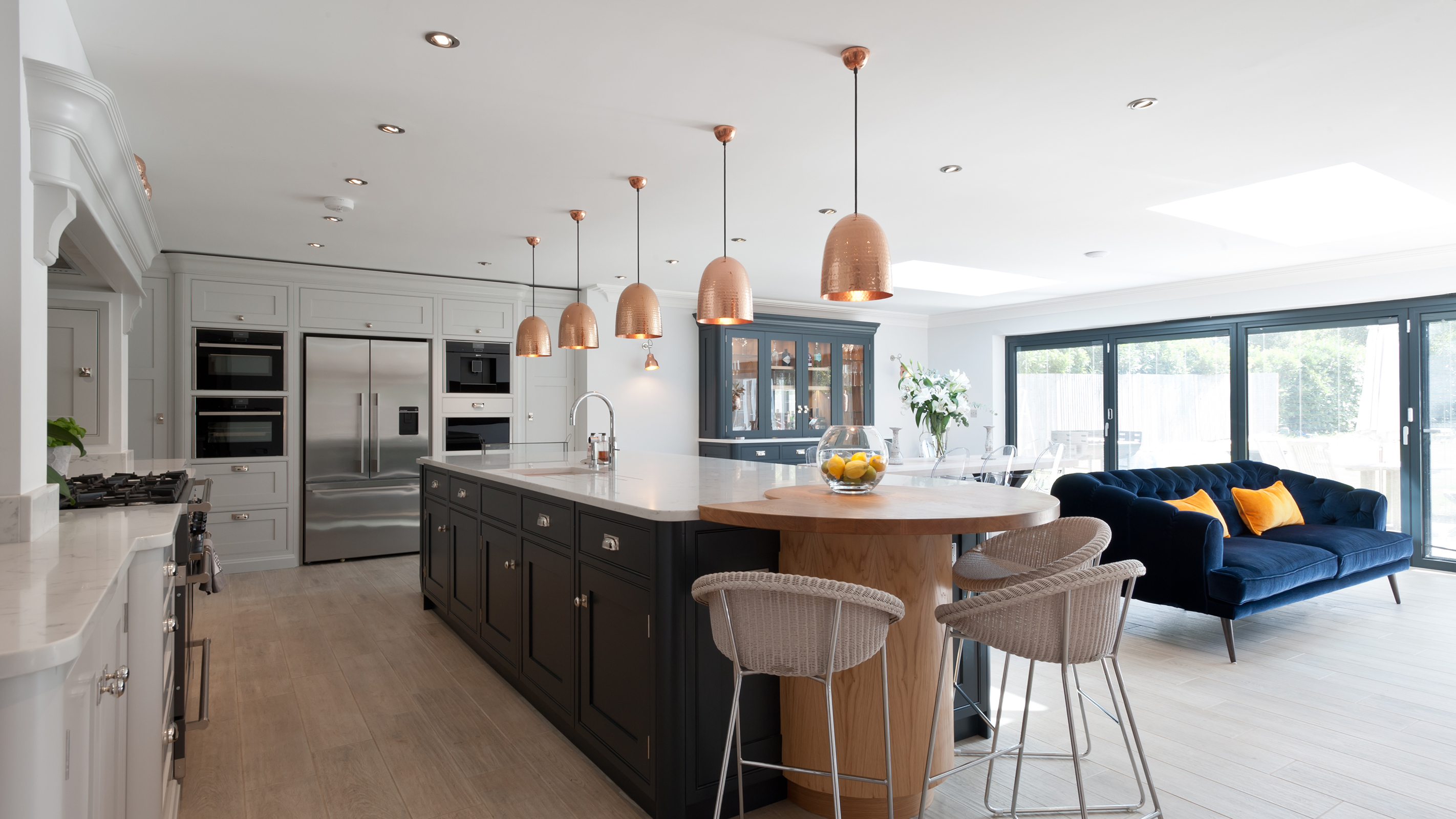
Take a careful look at your budget
One of the main questions you will probably be asking when choosing between an extension or conservatory is how much does an extension cost?
Although the cost of an extension will vary wildly depending on its size, location and specification, as well as what you plan on using it for, we can offer you a general idea. In addition, if you plan on replacing a conservatory with an extension, there will be some extra cost considerations.
However, as a guide, building a single-storey extension is likely to cost between £2,200 - £3,300/m² of new internal space (excluding VAT).
As with extensions, conservatory costs will depend on several factors, with size and material usually having the biggest impact on price. Simple uPVC lean-to conservatories will cost considerably less than premium timber designs.
The average cost of a conservatory is estimated to be around £2,000/m². However, you could be looking at as little as £6,000 for a simple uPVC lean-to style design and upwards of £40,000 for top quality and timber versions.
You will also need to factor in skip hire, having the new opening from the house made and finished, new doors and labour.
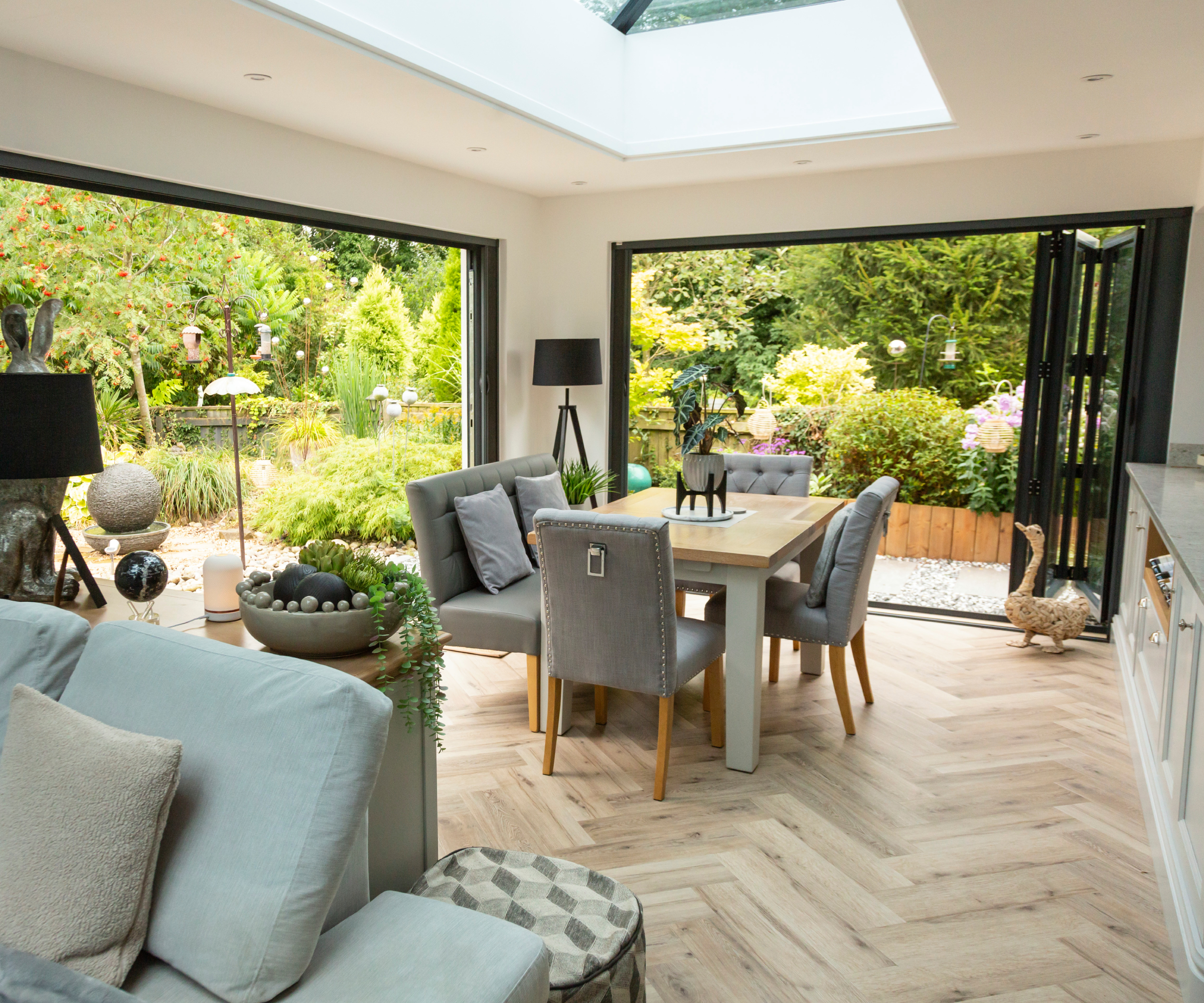
Do speed and disruption matter to you?
If you're looking for a quick fix extension to serve as an extra living space, home office or dining room, then an off the shelf conservatory solution will potentially provide you with more room in less time.
Also bringing less disruption to your existing home in the process, there's plenty of design options to choose from whether you're looking for small conservatory ideas or modern conservatory ideas.
Or, if you want the best of both worlds, and have an existing conservatory that needs an upgrade, you could replace it with a hybrid solution now being by offered companies that have recognised the consumer desire for something more resembling an extension to replace old and tired conservatories.
“Products such as our CosyRoom range are ideal for homeowners looking to refurbish or replace outdated conservatories and create versatile spaces such as lounges, home offices, or dining areas – all without the lengthy delays or high costs associated with traditional brick construction”, says Rachael Munby, chief marketing officer at Anglian Home Improvements.
It could also tick the eco box if you're keen on a sustainable extension too.
“We know more and more homeowners are prioritising their environmental footprint, so we developed CosyRoom to be a strong, sustainable option that doesn’t compromise comfort, style, or functionality”, adds Rachael. "It's up to five times more energy efficient than the average UK home, while also incorporating zero-waste production methods."
Light enough to be built on your existing conservatory foundations, it also feels more bespoke as you can choose your glazing and roof finish among other items. That said, this all adds to the timescale meaning you could need to allow anything from 10 up to 26 weeks for the finished product.
And finally, when it comes to timescales, one of the major factors affecting this can be the need for planning permission for extensions or building regulations approval.
Unlike extensions, in many cases conservatories will be exempt from the Building Regulations. In most cases, building regs won't apply providing:
- The new structure is built at ground level and is no more than 30m²
- The conservatory has a heating system that is separate from that in the house, with independent controls
- High quality external walls, doors or windows separate it from the main house
- All glazing and any fixed electrical installations comply with the relevant Building Regulations requirements
It is also worth noting that should you choose a solid roof conservatory, Building Regulations may apply – check with your local authority.

Rachael Munby leads innovation and quality at Anglian, ensuring its reputation as a home improvement leader. She champions British manufacturing, pioneering products, and outstanding customer satisfaction.
Pros and cons of extension vs conservatory
In summary, in order to make your final decision regarding extension or conservatory, it can help to weigh up the pros and cons of each option.
The benefits of conservatories vs extensions
- They often won't require planning permission, given that they are unlikely to exceed the dimensions deemed acceptable under Permitted Development rights
- They won't usually require Building Regulations approval (see above)
- They will not disrupt the rest of your home while being erected
- They can be constructed quickly
- They are generally cheaper than extensions
- They offer great views of the garden
- You will often be given a fixed price – so no nasty surprises
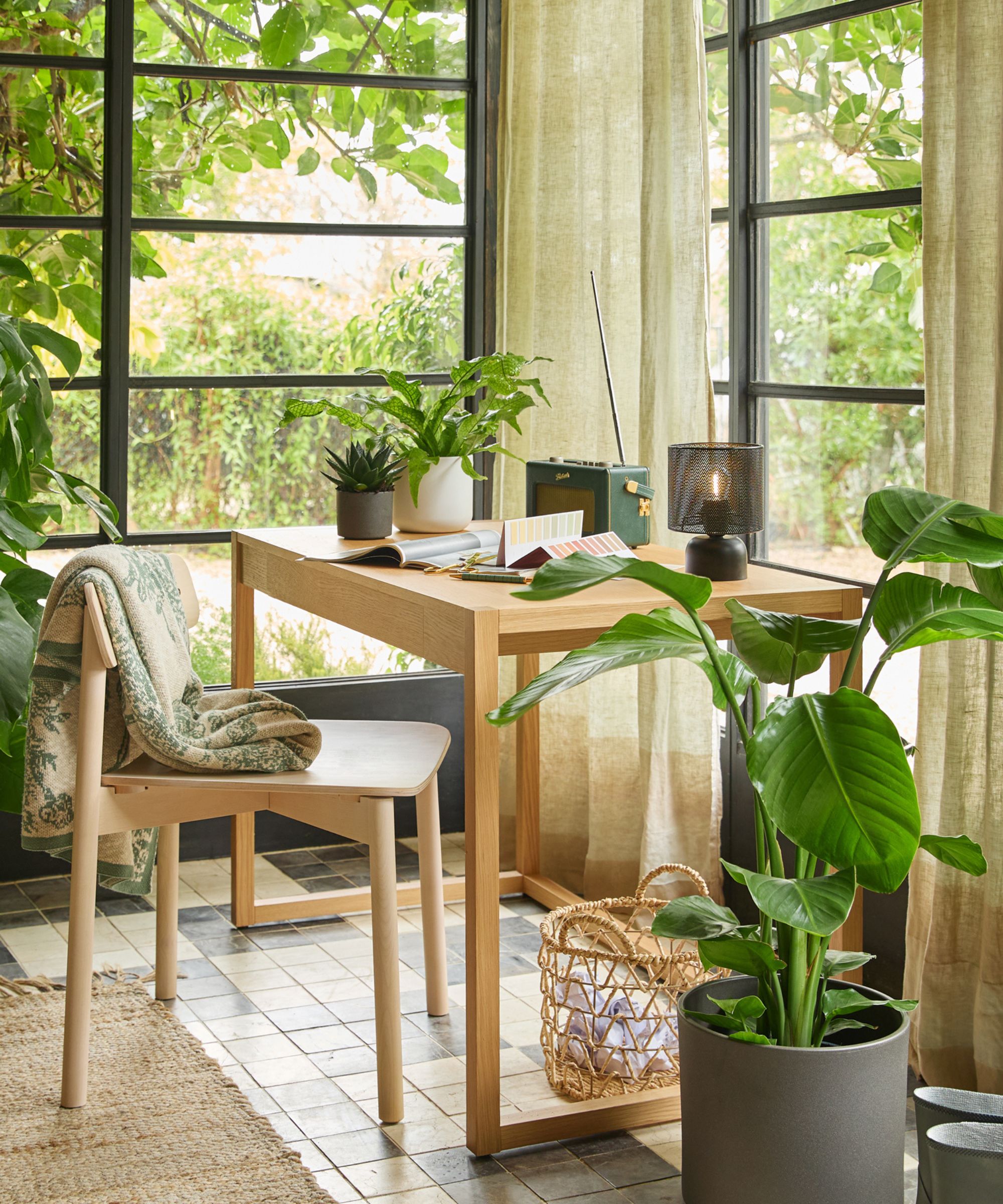
Why an extension can be better than a conservatory
Although it is a little hard to cover all the pros and cons of extensions, given the range of styles, sizes and types, there are a few clear benefits worth bearing in mind when making the decision between an extension or conservatory:
- Size is only limited by budget and, possibly, planning restrictions
- May still fall under Permitted Development and don't require planning permission
- Can be two storey and pretty much any shape or form you wish
- Can be constructed and clad in a number of ways to suit your existing property
- They're robust and will likely last longer than a conservatory
- Will add value to your home
- Can be constructed to remain at a comfortable temperature all year around, with plenty of insulation
- Will allow you to remodel your existing layout
- Can be added to the front, side or rear of your home (providing the planners allow)
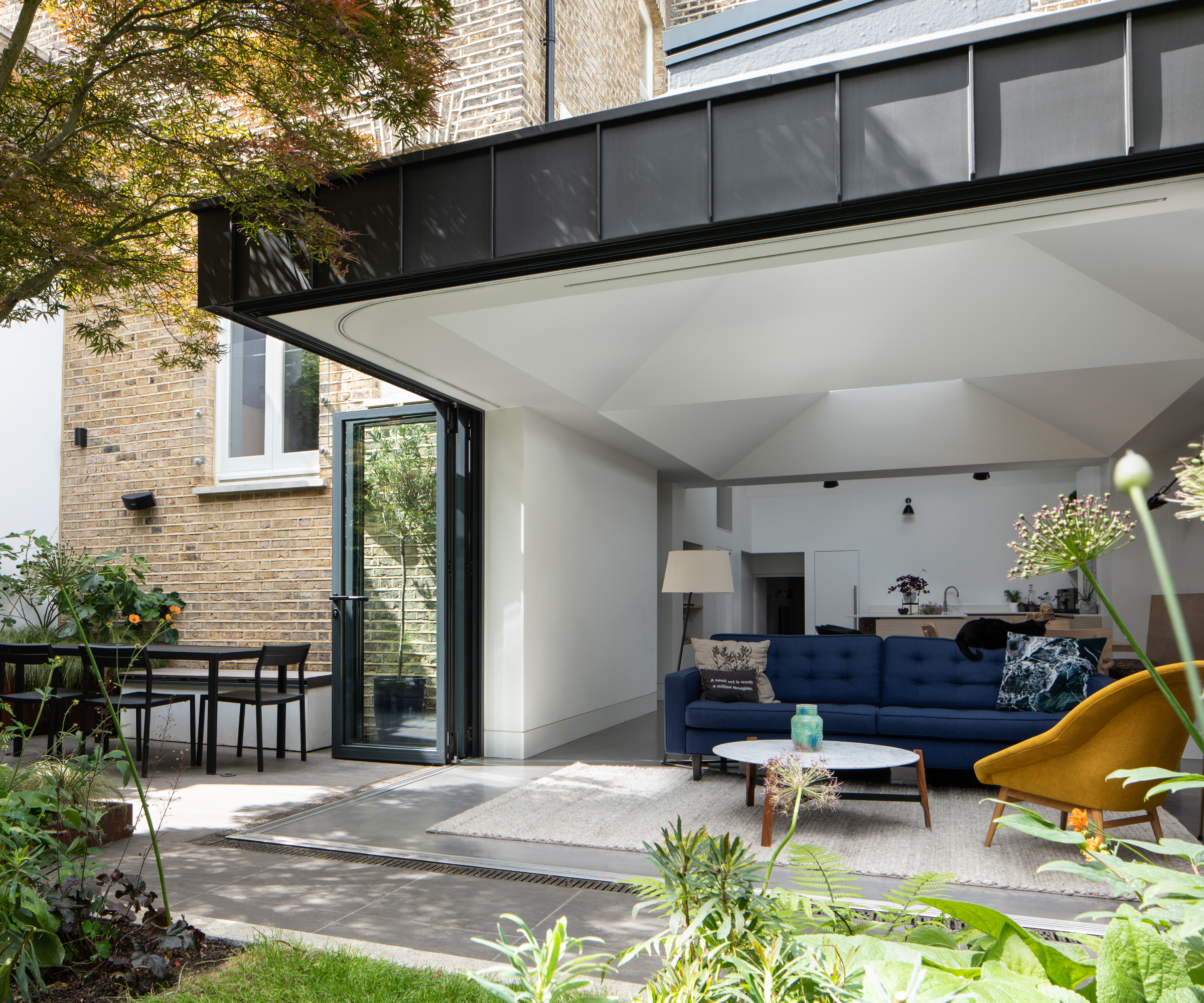
Conservatory cons to consider
However, while there are some amazing conservatory interior ideas out there and there's no doubt as to their time and cost benefits, it also pays to be aware that there are also some cons to having a conservatory as opposed to an extension, including:
- They can be prone to temperature fluctuations – too hot in summer, too cold in winter
- Won't always be suitable in gardens that are overlooked
- Don't add as much value as an extension
- They tend not to offer so much design potential as an extension, so may not suit all styles of house
- Not suitable for certain uses, such as an extra bedroom or bathroom
- Can be time-consuming to keep glass roof and walls looking clean all the time
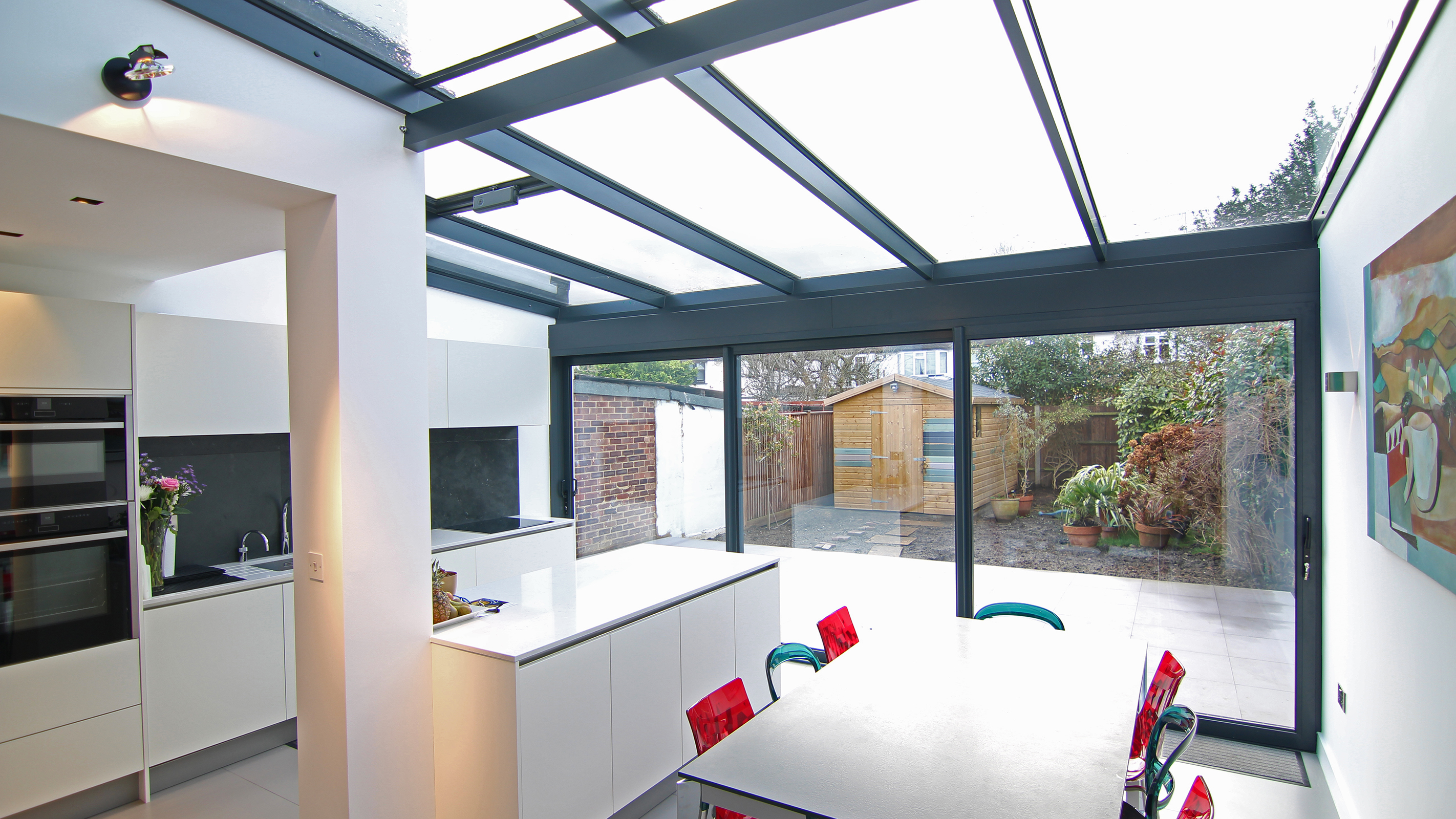
Extension disadvantages that may sway your decision
When it comes to the reasons not to build an extension, consider the following points:
- They tend to cost more than conservatories
- Will be more disruptive to your existing living arrangements
- They may require planning permission
- Building Regulations approval will be required
- They take longer to construct than conservatories
- Costs can easily spiral in some cases
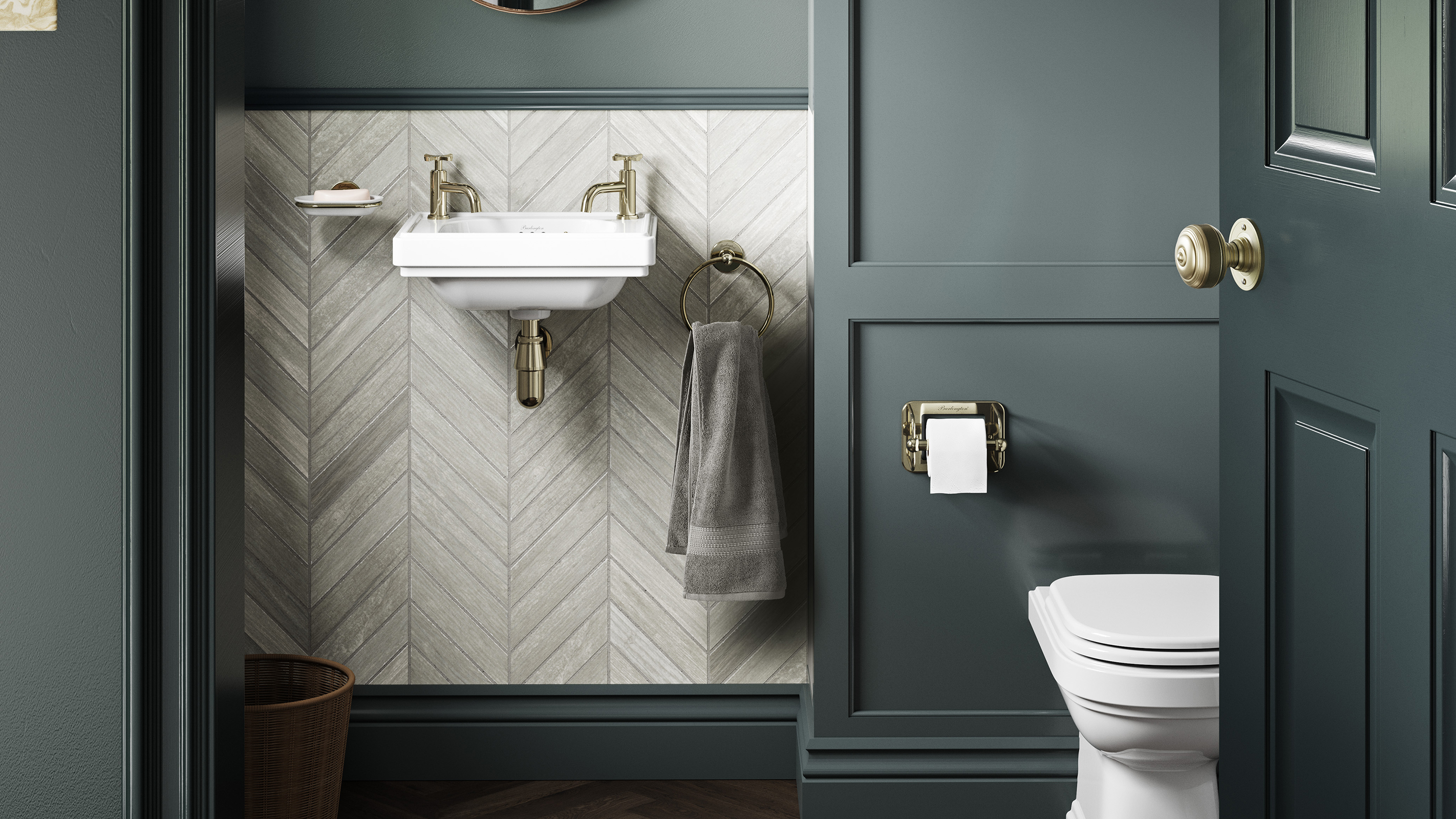
FAQs
What do estate agents recommend? Extension or conservatory?
While you may consider your property to be your forever home, it's still worth taking into account how experts in the industry view your property when it has an extension or conservatory. Although moving home may not be on the immediate cards, it's also worth investing in home improvements that will reap rewards – or at least make a return on your investment.
How much value will a conservatory add is a common question amongst homeowners and one you should always ask before undertaking any major extension or renovation. And, while you can influence the value by making sure you add a quality product that you maintain and take care of, there's still a general view that other extension types may add slightly more value in the long run, although the difference may not be as much as you think.
Director of Benham and Reeves, Marc von Grundherr, says:
“In theory, any addition to a home that adds livable space should add value in the eyes of potential buyers but some are certainly more worthwhile than others. A loft conversion tends to be the most profitable endeavour in this respect, adding an estimated 20% in value which equates to just over £54,000 on the current average UK house price.
"A double-storey extension will add around 12% or £33,000 so can also make for a worthwhile project, although both are quite an undertaking in terms of the level of work required.
"For those looking for a quicker win, both a single-storey extension or a conservatory can be a good option," he confirms, "adding around £18,000 and £16,000 respectively."
Mark's tips for making sure your conservatory appeals to a wide enough audience? Consider options such as bi-fold doors, make sure that you have temperature control in hand and ensure you've chosen a design that will appeal to everyone.
"In many cases, homebuyers still see an old conservatory as an obstacle that needs removing," he warns, "so, all things considered, whilst a new, more up to date conservatory will technically add value, we still feel an extension is a far better option when it comes to the overall appeal and sell-ability of your property.”

Marc has been a Director at Benham and Reeves since 2001, overseeing rental operations and developing new business. As a property expert, Marc frequently contributes to national media, including the BBC, Bloomberg, and major publications like the Times and the FT.
Keen to explore more option for adding to your floorplan? Take a look at these living room extension ideas if you're hoping to add impact to your exterior, of if you like the idea of a more traditional conservatory style, try out these orangery ideas for size too.

Sarah is Homebuilding & Renovating’s Assistant Editor and joined the team in 2024. An established homes and interiors writer, Sarah has renovated and extended a number of properties, including a listing building and renovation project that featured on Grand Designs. Although she said she would never buy a listed property again, she has recently purchased a Grade II listed apartment. As it had already been professionally renovated, she has instead set her sights on tackling some changes to improve the building’s energy efficiency, as well as adding some personal touches to the interior.
